REDDING, Calif.—The far-northern counties of California are blessed with spectacular scenery and a singular vibe. From the coastal redwoods to the inland ranches to the tip of the longest, most fertile valley in America, they take in an extraordinarily diverse terrain.
Shasta Lake threads 11 square miles through fir-covered mountains, and snow-capped Mount Shasta, an active volcano in the Cascades, reigns over all. Cowboys, spiritualists, foresters, off-the-gridders, cultivators of weed—they all make up the motley population that is the North State.
A magnet for hikers and fly fishermen, the region once employed thousands of workers in the copper mining and logging industries. But then came the endangerment of the northern spotted owl, pollution from the copper operations, and the state and federal environmental regulations that sharply curtailed logging and virtually shut down the mines. The changes turned so many residents against the government that the region has often flirted with the idea of seceding from the state. The changes also contributed to lasting social problems.
With the region’s 22 percent adult poverty rate, many residents suffer poor health, housing insecurity, and drug addiction—all aggravated by the sheer size and remoteness of the area. California has 58 counties; the seven northernmost cover more than 26,000 square miles, an area larger than West Virginia. In at least one county, cattle outnumber people. Getting from one town to another requires long drives along densely forested mountain roads or on an interstate crowded with Portland- bound trucks. There are few colleges or universities; the North State is a veritable higher education desert.
When leaders from five counties—Shasta, Trinity, Tehama, Modoc, and Siskiyou—got together a few years ago to tackle the area’s problems, they unearthed some startling statistics: Only 30 percent of the region’s working-age residents (ages 25-64) held at least an associate degree, and just 20 percent had a bachelor’s or higher. Interestingly, 31 percent had attended some college but never finished—a rate that was the highest in California (the state average is 21 percent) and one of the highest in the nation. To the leaders, that meant the area was poised for progress.
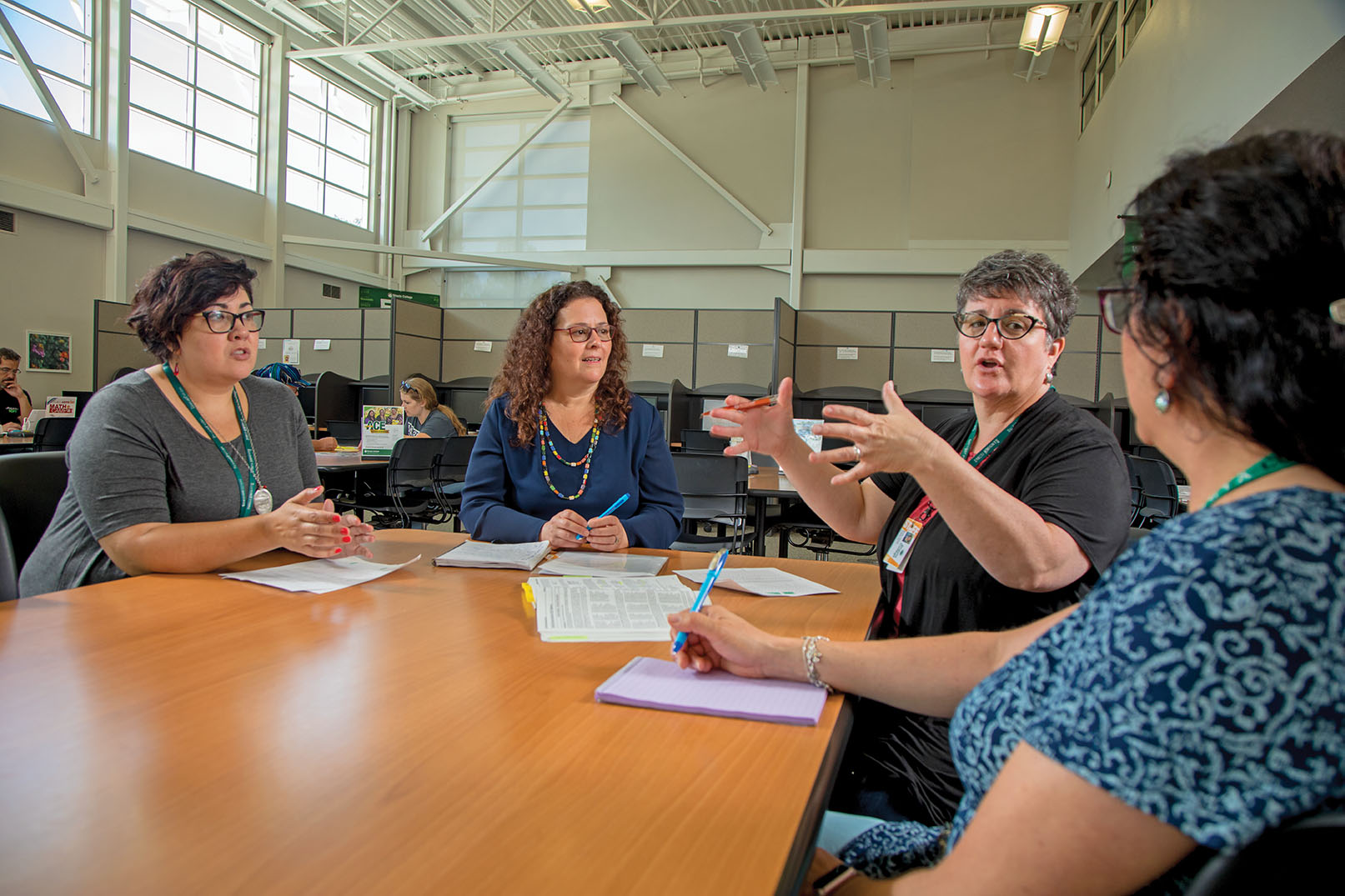
“It all came down to education,” said Kate Mahar, dean of institutional effectiveness at Shasta College. But to improve attainment, the leaders realized that no single county or organization could take on the challenge. Each of the five counties was doing important work, but by sharing information, data, and resources, they knew they could do a lot more: They could serve the region’s far-flung residents from cradle to career.
The result of those initial meetings was a consortium known as North State Together. The partnership, funded in part by the local McConnell Foundation, works to boost educational achievement, improve health, and relieve poverty and other social ills.
Central to the partnership’s mission is re-engaging students who’ve stopped out of college and smoothing their paths to marketable degrees. Shasta College, a community college in Redding, acts as the backbone organization for North State Together. Shasta is the only public college serving Shasta, Trinity and Tehama counties—an area larger than each of nine states. And it serves stopped-out students with two new programs in particular: one that helps them earn associate degrees faster, and another that offers students continued local support while they complete bachelor’s degrees elsewhere.
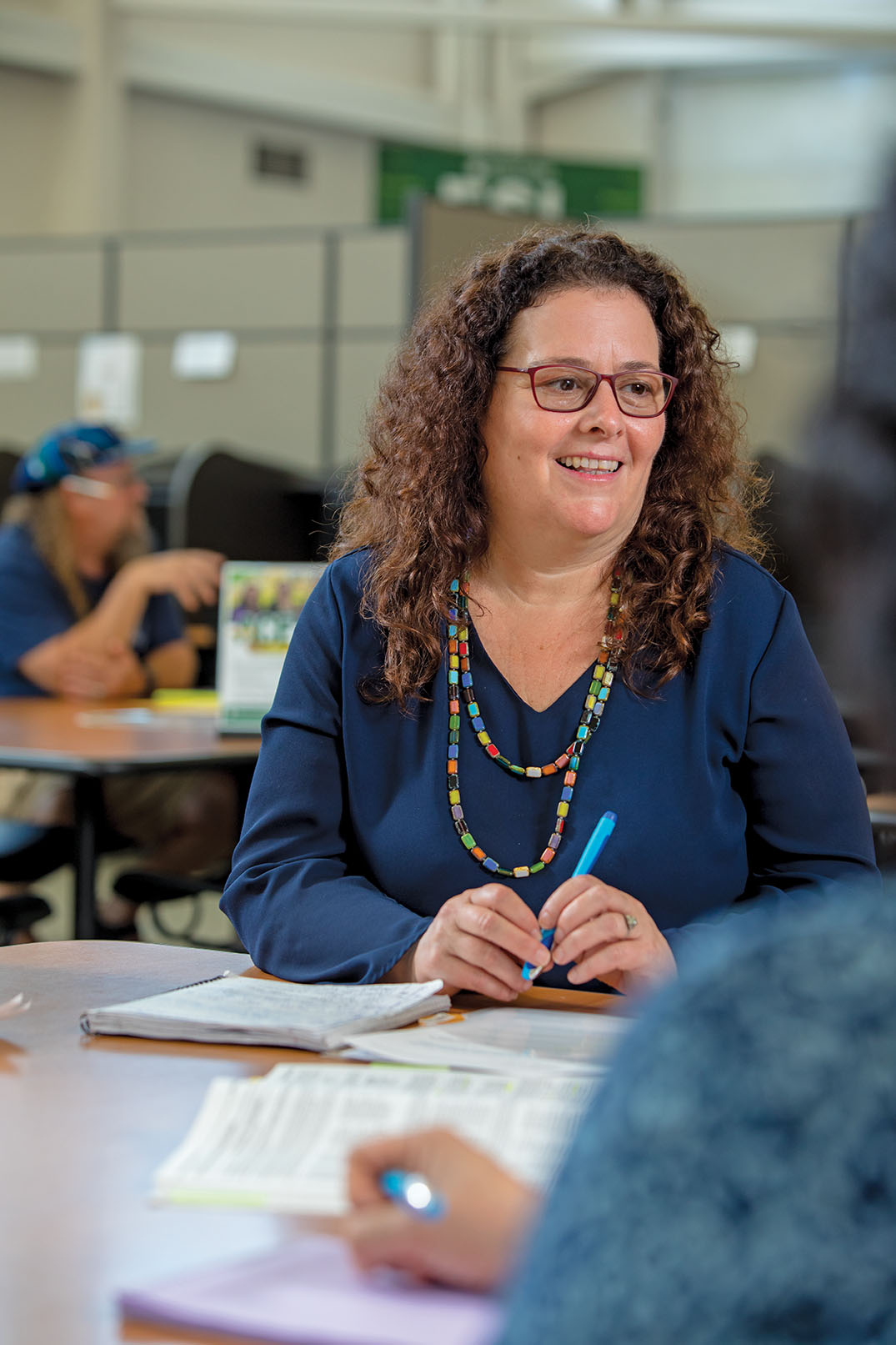
The first program, Accelerated College Education, or ACE, takes advantage of the fact that older working students are motivated, disciplined, and in a hurry. The typical student in this category has a full-time job, a family, and might take one class each semester. At that rate, it would take 20 terms to earn an associate degree (10 to earn a certificate).
Jeff Hoxie, 39—here at his “day job,” checking the specs on precast concrete forms—is a later-in-life college student. He earned an associate degree in business this May through Shasta College’s Accelerated College Education (ACE) program, which is designed for working adults. Hoxie’s next step: choosing the institution at which he’ll pursue a bachelor’s in construction management.
“That’s almost seven years!” said director Buffy Tanner. “And that’s assuming the class schedules work with the rest of your life.”
For this group, they rarely do. So the ACE schedule compresses courses into eight weeks instead of the usual 17. Working at this accelerated pace, students can complete a certificate in just nine months and an associate degree in two years—even less if they earned some credits before entering the program. And to accommodate students’ jobs and families, classes always meet on the same two days—Tuesdays and Thursdays—in the morning or evening. Some courses can also be taken online.
The adult students enjoy personalized support from Shasta staff, and the model encourages them to engage with older students in similar circumstances. Being in a cohort gives them a sense of community and belonging that often eludes older students.
“They really do support each other,” Tanner said. “If one of them leaves or is absent, they keep tabs on them.” Tanner tells of a student who couldn’t make it to her graduation last year; her classmates made a cardboard cutout of her and included it in the class photo.
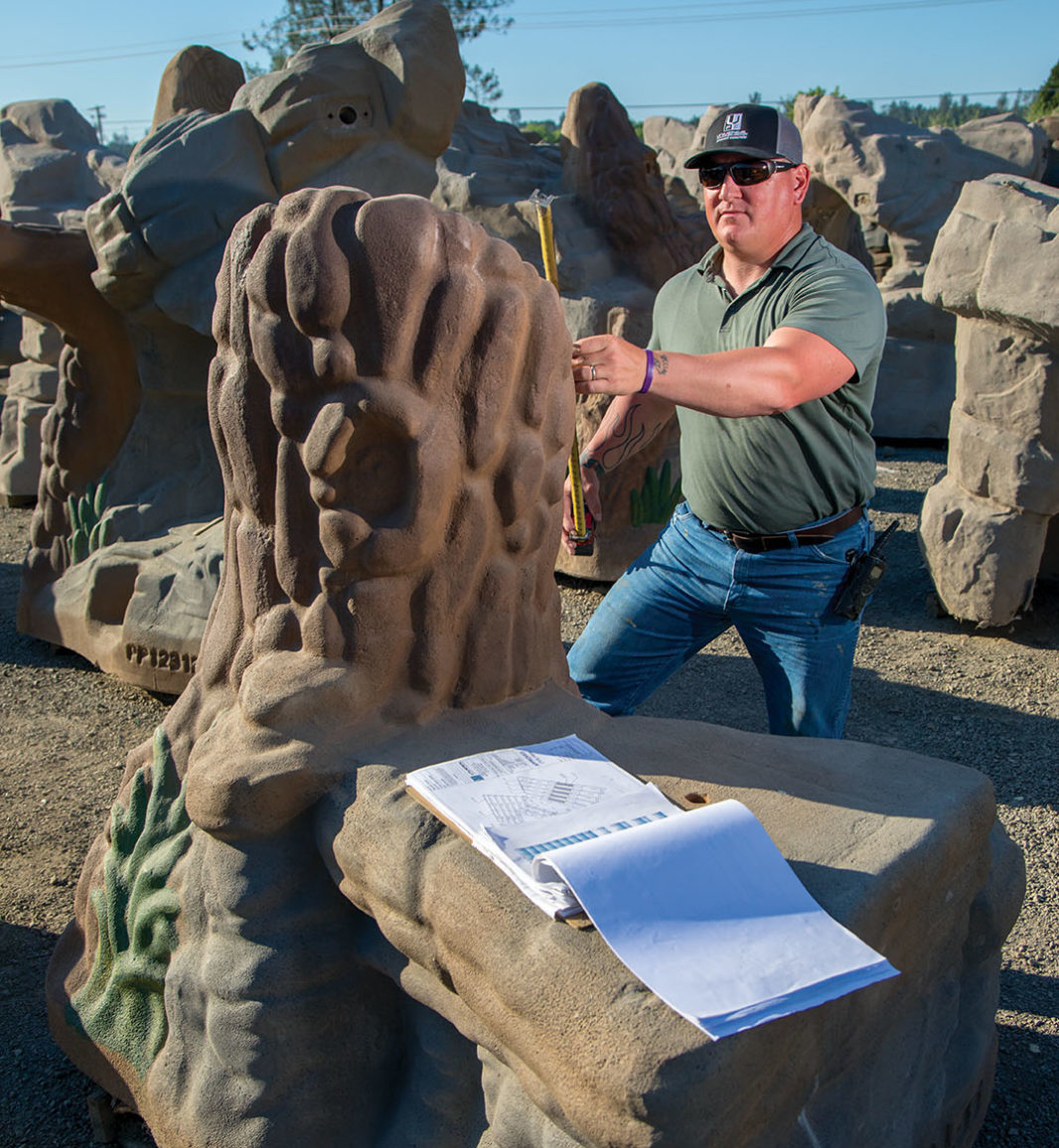
Among this year’s graduates is Redding resident Jeff Hoxie, 39, who juggled college classes with 10- and 12-hour days as an inspector for a precast concrete company. Hoxie had first enrolled at Shasta years ago, right after high school, his main interest being football. Then he got a job at Costco. “For the first time I was making money,” he says. “And the next thing I knew, 17 years had gone by.”
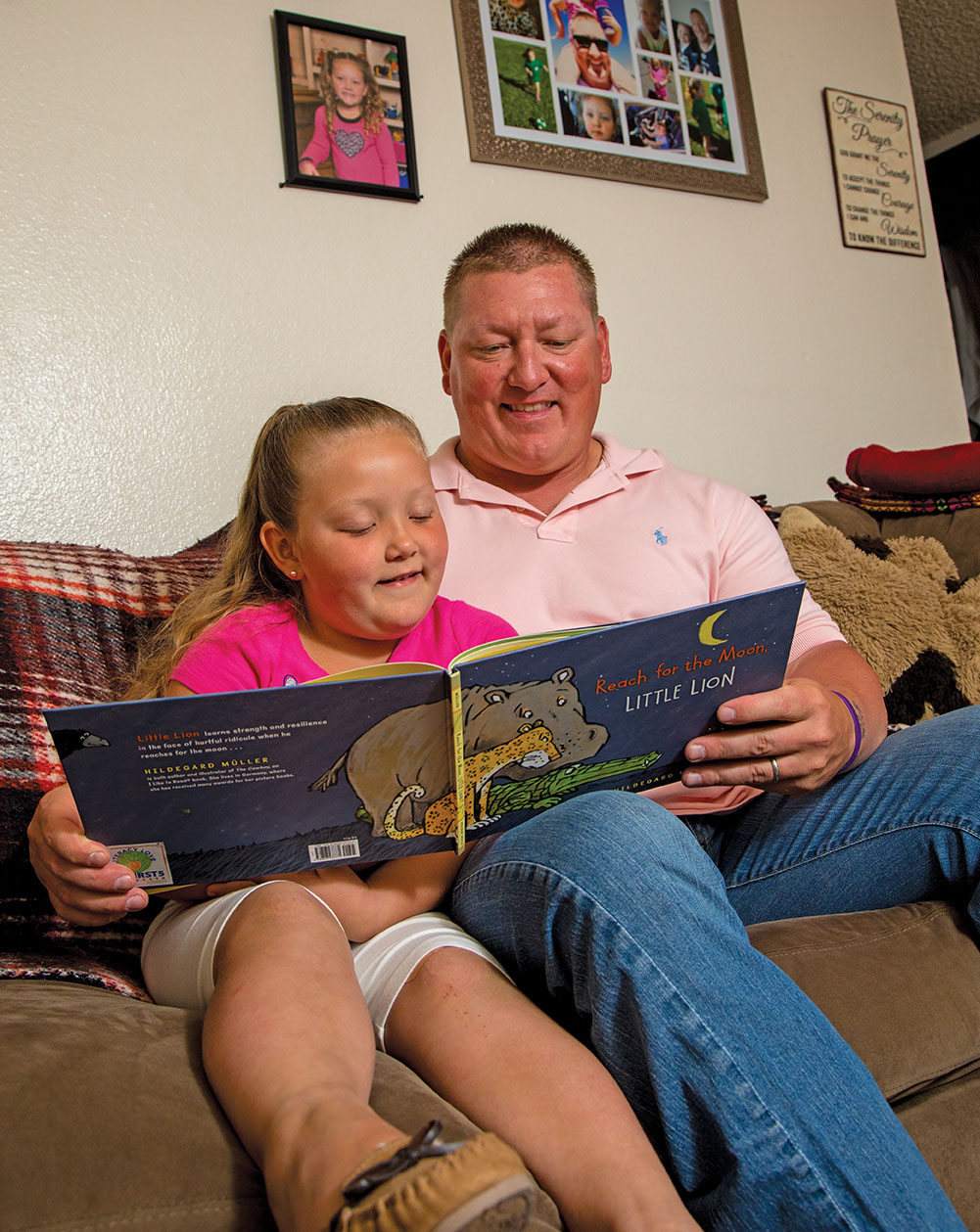
Today Hoxie has a 5-year-old daughter, Danika, who is growing up in a world in which a high school diploma will no longer suffice. “Ninety-five percent of my reason for going back to college was to show my daughter,” he said. A business major, Hoxie went to class Tuesday and Thursday nights—and took some courses online—under the ACE model. He makes clear that “accelerated” doesn’t mean “watered-down.” “Acceleration is a whole other beast,” he said. “You have a test every couple of days. It’s good if you’re disciplined, but if you’re a slacker, it’s not.”
‘I hated school’
Hoxie’s classmate Rachelle Stahle, 26, a married mother of three, shares his assessment. Stahle was already more than busy taking care of her family and working as a custodian at the college. After high school, she says she had “absolutely no interest whatsoever” in attending college. “I hated school,” she said. “I had some rough teen years.”
Her plans to join the military were foiled by a knee injury, and marriage and family decided the rest. Like Hoxie, she said, “my kids were my push.” She, too, took the speedy route. “Acceleration is good and bad. When I took a 17-week course, it was painfully slow. But with compressed, there is no easing into it.”

Some faculty members argue against the shorter course sequences, saying students need more time to process information so they can better retain it. But academic studies have shown that shorter terms can be just as effective as traditional ones. Tanner pointed to one academic study showing that students in developmental education perform better with shorter courses. She also cited a study that compared nursing students in shorter and longer courses and found no difference in their performance on the licensing exam.
So far, the results at Shasta seem to bear out the findings of such studies. Of the 62 students who enrolled through the ACE program in August 2018, 49 (79 percent) are still in the program. Factoring in those students who are taking planned leaves, that figure rises to 87 percent. Also, the passing rates for the ACE students are better than those for students overall—89 percent versus 79 percent.
Support at Shasta doesn’t end with an associate degree. Most older students find it impossible to pull up stakes and move to the campus of a four-year university. On the other hand, pursuing an online degree can be isolating. So Shasta makes it easier for its alumni to get their bachelor’s degrees online from another institution, but with on-site Shasta support. Students in the Bachelor’s through Online and Local Degrees (BOLD) program take one-unit classes at Shasta, paid for by the Shasta College Foundation, that help them adjust to their new university and careers. And as they pursue their bachelor’s classes online, they connect with each other while enjoying access to Shasta’s library, computer labs, high-speed internet and health center.
“Shasta College is their academic ‘home,’ and the BOLD cohort is their academic ‘family,’ Tanner explained.
Among that family are former foster youth, a population with an exceptionally low rate of college completion—under 4 percent nationally. It’s also a population that is over-represented in this rural region of the state. In Shasta County, the rate of child abuse and neglect is nearly 9 percent, compared with 5.5 percent for the state as a whole.
Recognizing the transition issues these students can face, Shasta College shows former foster children some extra love: weekly workshops, academic help, field trips, personal mentoring and, perhaps most important, a community. Along with the occasional gas card and grocery voucher, these supports help students succeed in their course work while helping them develop skills they need to transition to four-year colleges and careers. BOLD also allows students to stay connected to these services once enrolled in four-year schools.
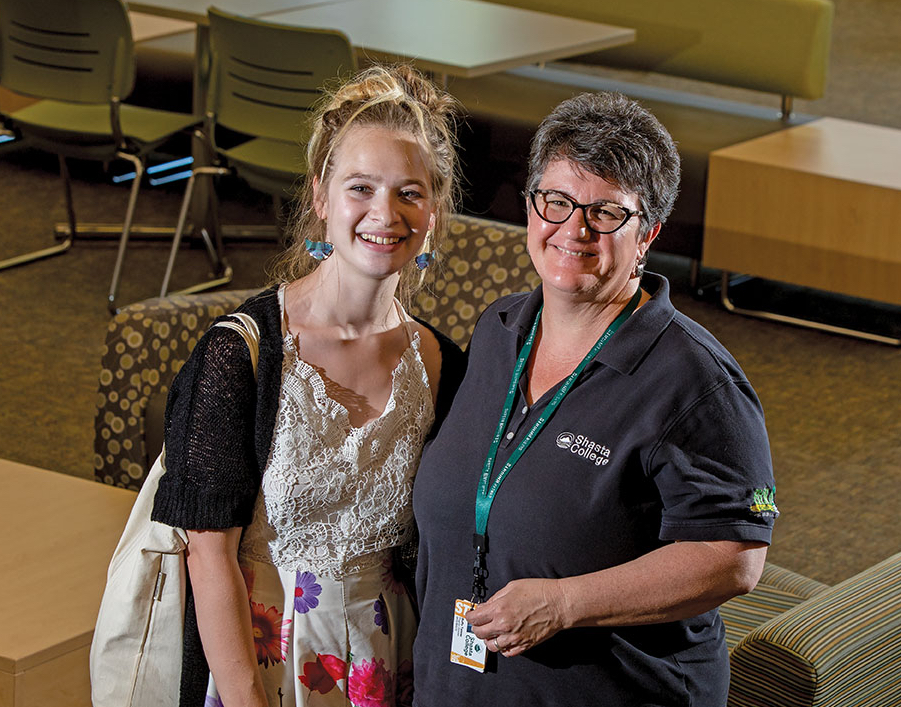
Shasta alumna Kalyn Jones, 25, has navigated an unusually rocky path from childhood to her recent graduation from California State University-Chico. Her mother, an ex-felon, died of a drug overdose when Kalyn was small. Her father, a disabled Army veteran with drug problems and a criminal record of his own, ran a small-time marijuana operation in remote Crescent City, neglecting Kalyn to the point of sending her to foster care.
She ran away a few times, dabbled at College of the Redwoods, and finally realized: “If I don’t get out of Crescent City, I’m going to end up a cashier at Walmart for the rest of my life.” She eventually made her way to Shasta, crediting Foster Youth Counselor Robert DePaul with saving her educational life. “I probably would not have graduated if it had not been for Bob,” she said.
Collecting her Cal State-Chico degree with Jones was former foster child and fellow Shasta alum Caitlin Davis-Rivers, 23, whose childhood was disrupted repeatedly by housing evictions and school changes. In her case, too, the cause was adult addiction. “I was the parent,” Davis-Rivers recalled, and that meant she wasn’t much of a student. She skipped school regularly and racked up a string of failing grades.
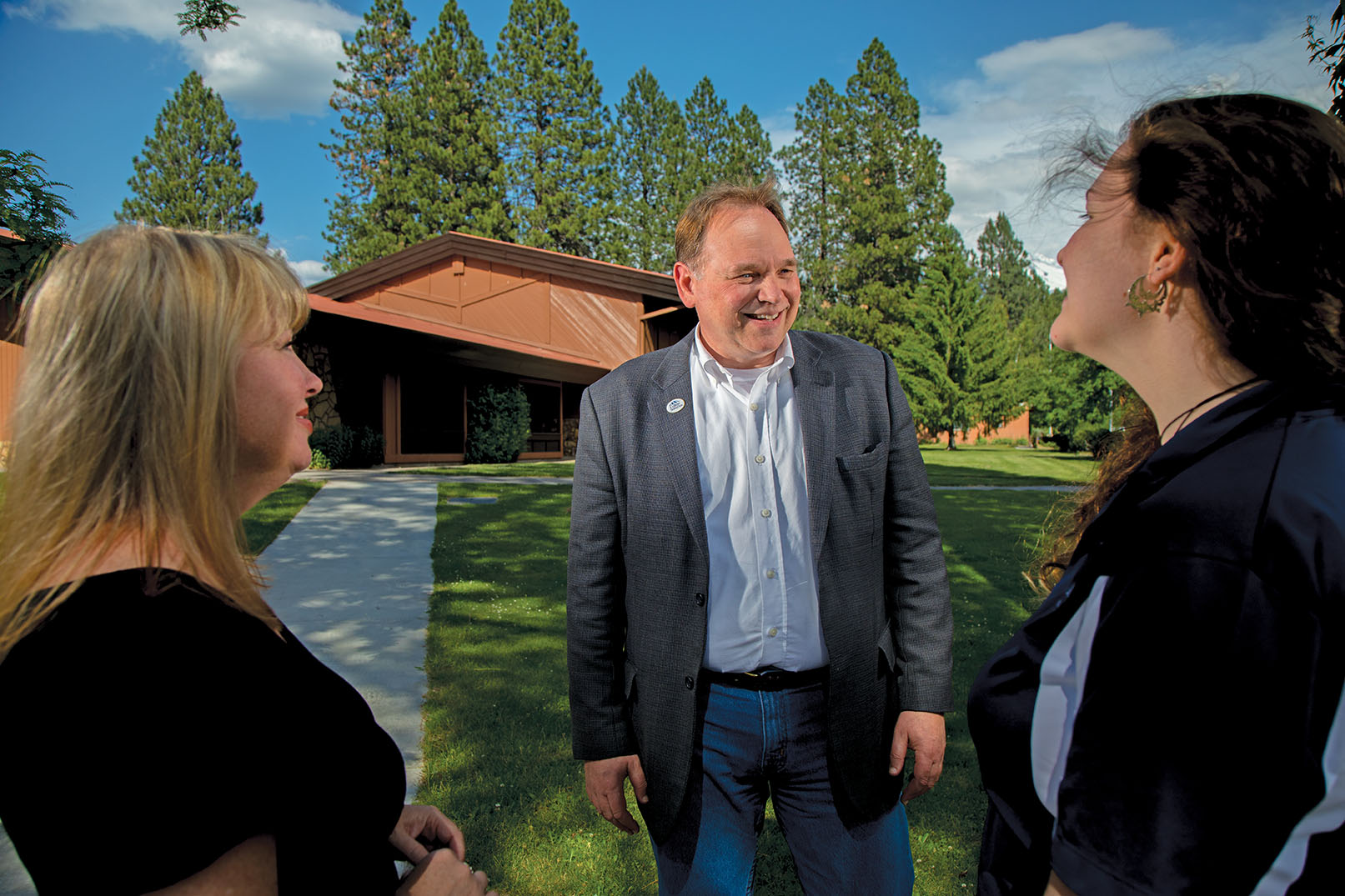
“I didn’t know what studying was,” she said. “Middle school was the worst time of my life.” Davis-Rivers fared little better in high school and was placed with foster parents with whom she regularly clashed. No one talked to her about college, she said, but there was one thing she knew: “I didn’t want to end up like my parents.”
With her bachelor’s degree in psychology, Davis-Rivers hopes to work as a counselor; Jones plans to attend law school. Both are passionate advocates for foster youth, and both say assistance like Shasta’s is needed to level the educational playing field for this neglected group of young people.
“I understand that college is about having to be independent and leave the nest,” Jones said, “but foster kids didn’t even have a nest to fly out of. We weren’t equipped with the tools we needed when we got out of that foster home.” The two young women understand that former fosters may welcome college as a chance to lose that label. But as Davis-Rivers said: “Once you realize it’s not your fault, it’s a safe space. I loved coming here. You feel an instant connection with these people. Even people you wouldn’t hang out with, even people you couldn’t stand—we have this bond.”
Starting early to succeed
As effective as these on-campus supports are, they are coming late in the game. To boost attainment, educators and activists know they have to change minds starting in the early grades. For instance, California has seven academic requirements for admission to state colleges, and too many students in the region were blowing them off.
“Many students were taking the attitude that ‘There isn’t a university here, so we don’t need these,’” said Becky Love, a longtime high school counselor now with the Shasta County Office of Education. Another problem in this fiercely independent region is the sheer number of school districts, all with different standards for student advising. “Some were pushing rigor, others social and emotional learning,” Love said. They have now agreed to make counseling more robust and consistent; they are talking to more students, earlier—starting when they are freshmen—and tracking them carefully. “[The districts] were being reactive,” Love said, “and now they are being proactive.”
Meanwhile, at the far end of the pipeline, North State Together is working to make sure that the post-high school experience, whether it leads to a certificate or a bachelor’s degree, connects to industry demands. New California legislation requires this alignment, along with other community college reforms, but the colleges here are ahead of the game. They’re creating academic pathways and building bridges to each other and to the sectors that are poised for local growth: manufacturing, small business creation, culinary arts, hospitality, health care, energy, and global business.
Preparing students for jobs in the technology sector has proven more challenging. “Internet access is a problem here,” said Eva Jimenez, Shasta’s associate vice president of economic and workforce development. “A lot of people are still on dial-up. When it snows, the whole town can shut down.”
Another feature of the rural North State is unspoken but inescapable: It is the epicenter of the U.S. pot-growing industry. For years operating in the shadows, the industry is emerging with the full legalization of marijuana in California and several other states.
Careers in cannabis?
Spreading rapidly, legalization means legitimate careers here in the “Emerald Triangle” in cannabis research, cultivation, and marketing. It’s also giving area colleges a chance to help students prepare for these careers in a responsible way. According to Arcview Market Research, which tracks the industry, the business will support 467,000 jobs in the United States by 2022.
That’s a prospect local colleges can’t afford to ignore. About 70 miles from Shasta College, near the Oregon border, is College of the Siskiyous. It’s a two-year institution whose stunningly beautiful campus sits at the base of Mount Shasta in a town called Weed. (No, it wasn’t named for the plant, but for pioneer Abner Weed, who founded a lumber mill there in the late 1890s.)
College of the Siskiyous is the sole institution of higher learning in a sparsely populated county—seven people per square mile—that’s as big as Connecticut and Rhode Island combined. One of the few community colleges that boards students, it’s known for programs in, among other disciplines, justice administration, theater, business, and fire service.
To these courses of study, why not add programs that play to the local economy and draw on existing pot-growing expertise? Newly installed President Stephen Schoonmaker isn’t making any endorsements, but he noted that the California agricultural industry already offers good jobs in quality control: maintaining government standards for vegetables, fruits, and other farm products. Just as vintners conducted studies on soil and climate for Napa Valley grapes, the cannabis industry will be conducting similar research.
“Without being partisan, how do we support the growing demands of this industry?” Schoonmaker asked. “And not just cannabis, but the medicinal qualities of certain herbs?” Research has not been a traditional area of focus for community colleges, Schoonmaker admitted, but in this case, he asked: “Why not do research here?”
College of the Siskiyous also illustrates the challenges of rural life for colleges themselves. Although it is the only institution of higher learning for miles around—or perhaps because of it—Siskiyous has struggled with financial problems and gone through five presidents in the past eight years. It recently lost a service agreement with the San Francisco Fire Academy, which had provided the college with hundreds of students. And in an area of declining population—on top of a shrinking number of college-age students to begin with—Siskiyous and Shasta have had to be innovative in recruiting students and meeting industry needs.
Schoonmaker’s counterpart at Shasta, President Joe Wyse, welcomes the freedom he’s been given to try new initiatives, make mistakes, and expand programs that work. Among the more controversial is a partnership with the Shasta County Sheriff’s Office and other organizations that provides academic, logistical, and limited financial support for addicts and criminal offenders. The students in the program, known as STEP-UP, range from those with years-old DUI convictions to felons with more recent and serious criminal histories.
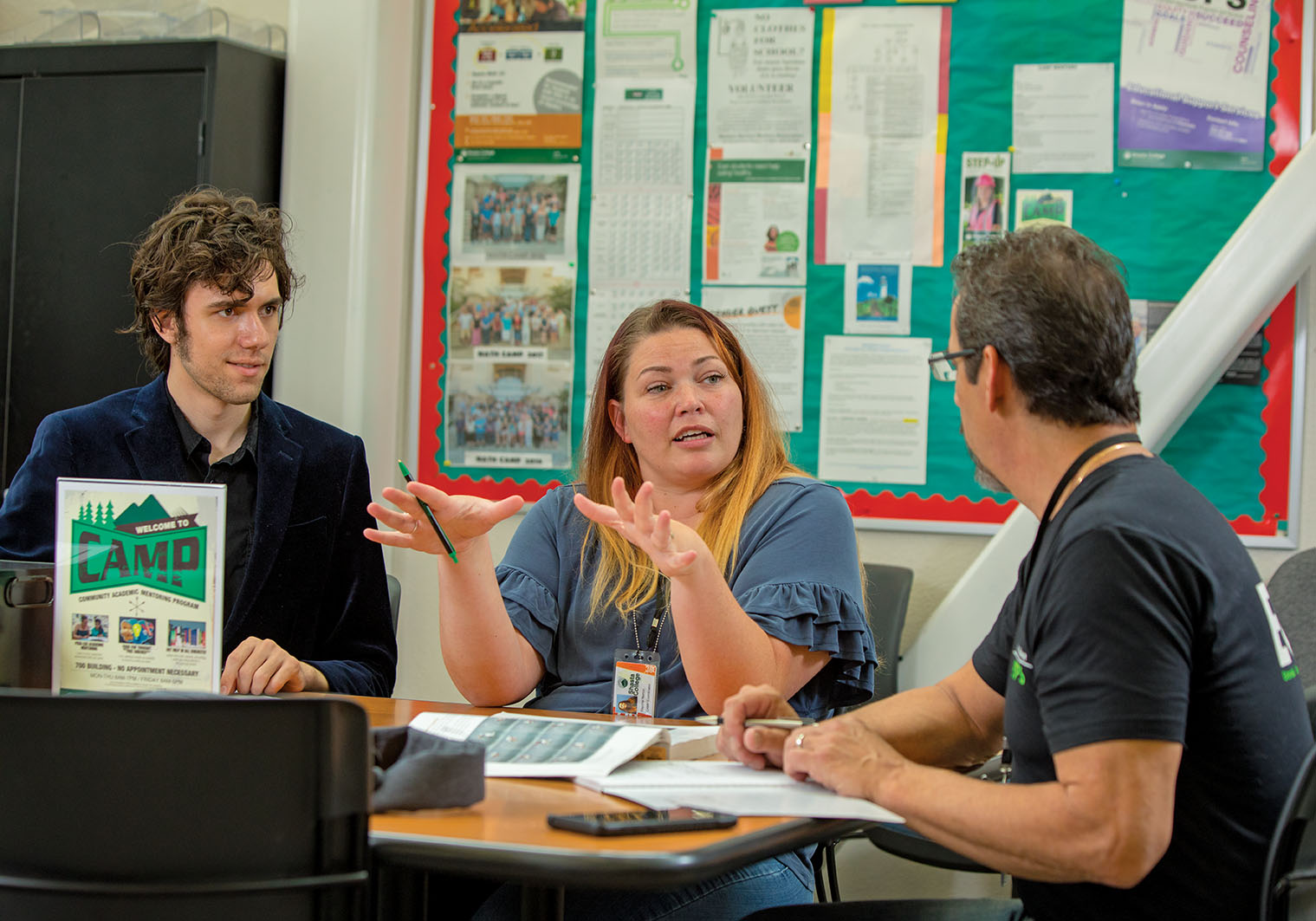
Raychel Norton, 36, a married mother of three, is among the latter. Having barely finished eighth grade, and addicted to methamphetamines by age 16, Norton did time for burglary, grand theft, forgery, and identity theft. “I was smart, but sneaky,” she said. She cycled in and out of rehabilitation facilities over the years.
With a high school equivalency degree earned in the Sonoma County Jail, she is now thriving at Shasta, taking courses in history, political science, and astronomy. In the fall, Norton will take accounting, English and business law, and in 2020 she is due to graduate with a major in business. Named “STEP-UP Student of the Year,” she already has been accepted at Cal Sate-Chico. “STEP-UP has transformed lives,” said Eva Jimenez of Shasta. To date, the program has served 176 students, and 38 graduated in May with associate degrees and various certifications. Eighty-three percent of the graduates are employed. The state of California recently gave Shasta a $1.5 million grant to replicate the program statewide.
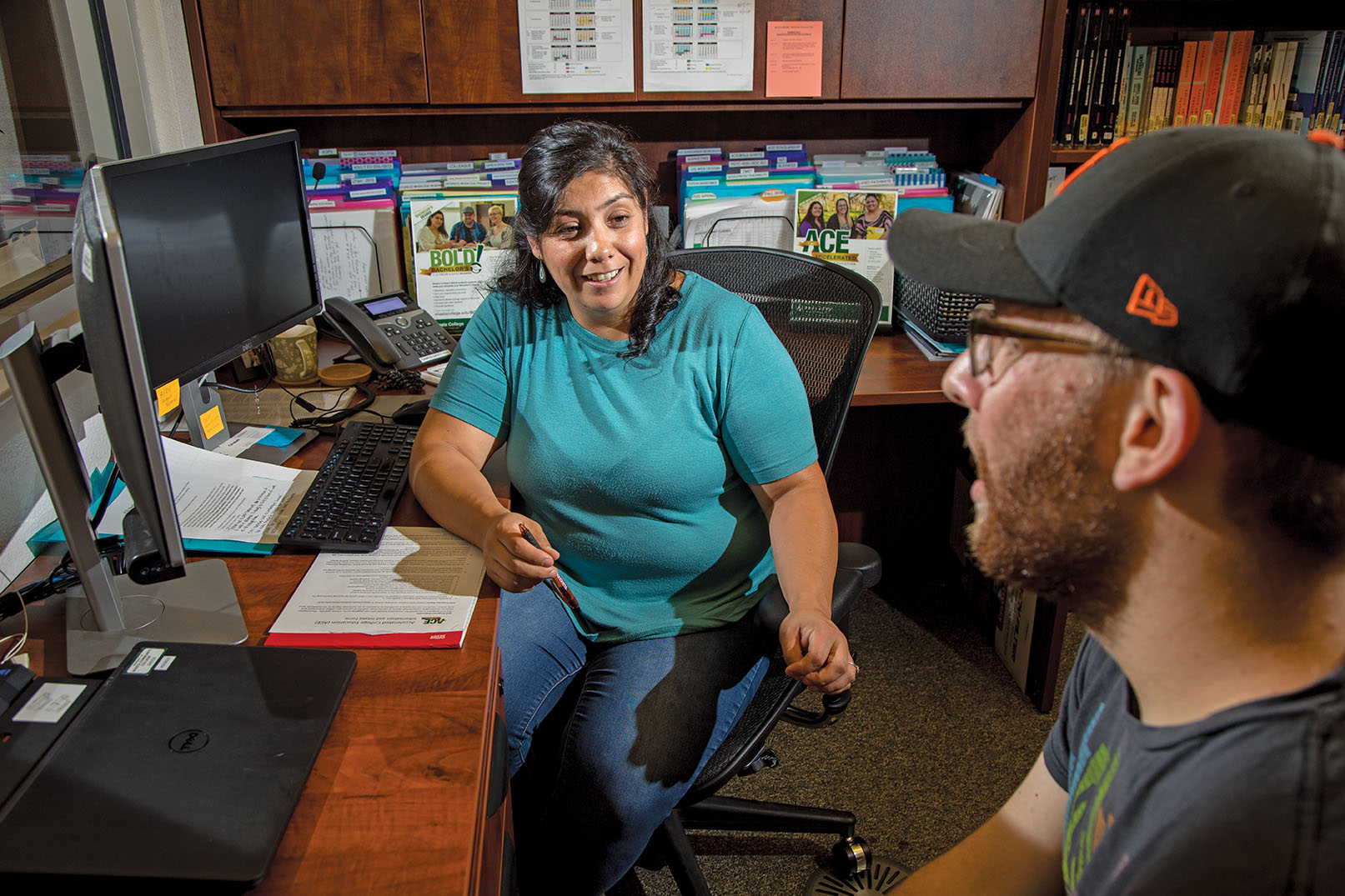
Unique even to California, the five counties of the North State Together collaborative are home to more than 9,400 American Indians, representing 21 federally recognized tribes and 10 others with deep local traditions and influence. That amounts to 3.1 percent of the population (4 percent in Siskiyou County), compared to .08 percent for California overall. While American Indians are still the smallest ethnic group in this overwhelmingly white region, their impact, says Mahar, is “historically and culturally profound.”
They also suffer disproportionately from social problems that interfere with learning. Their high school dropout rates exceed those of the general population here and throughout the state. American Indians are also the least-represented ethnic group in the California state university system, and they have an overall bachelor’s attainment rate of less than 20 percent. On the color-coded state education report card, which grades student performance from green to red—red sounding an alarm—“this group is orange and below in every category,” counselor Becky Love pointed out.
Many of the educational woes in the Native community can be traced to chronic absenteeism, starting in the early grades. Tribal students routinely struggle with transportation, often living hours away from public schools. They are often called on to care for elders or younger siblings. A dental appointment can become an all-day family affair. And tribal ceremonies, such as those associated with the annual salmon run, can require a trip to another state and last for days. Overlaying all these issues is the legacy of forced assimilation, which has led many Native people to distrust public schools.
Among the possible responses: embedding more Native American history in the K-12 and college curricula and introducing place-based accelerated programs, designed with tribal communities, that meet the needs of each nation. Thanks in particular to the work of tribal leaders and the Shasta County Office of Education, progress is being made, but it has been slower than expected.
“There was so much healing to be done first,” Mahar said. One of the tribes recently sued an area school district for discrimination, arguing that native students were being disproportionately disciplined. And a small battle erupted recently when high school graduates were forbidden to wear eagle feathers on their mortarboards. “It’s a myth that these families don’t care about education,” Mahar said. “It’s just that our systems haven’t been welcoming to them.”
In part because of setbacks like these, the partners of North State Together have tried to be realistic about their ambitions. Still, by working to better understand and accommodate native populations, stopped-out adults, and all students, they are intent on reaching a goal of 50 percent regional postsecondary attainment by 2025.
As to the Shasta College class of 2019: They made it to the finish line despite a year that was bookended by disaster. It started with the massive Carr wildfire, a blaze that ranked among the worst in American history, killing seven people, leveling 200,000 acres, and destroying more than 1,000 homes. And it ended with a freak hailstorm and tornado warning that forced the cancellation of graduation ceremonies that Shasta’s adult students had waited years to attend.
Through it all, a true North State community was forged, one that saw residents helping each other, working together, achieving together—and being strengthened by the experience.
